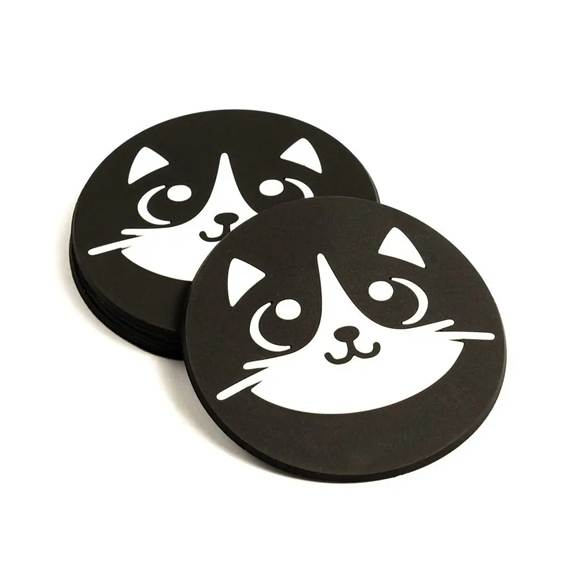Industrial facilities operating under extreme conditions face unique challenges when it comes to maintaining seal integrity. Whether dealing with corrosive chemicals, extreme temperatures, or high-pressure systems, the consequences of seal failure extend far beyond minor inconvenience. Catastrophic leaks can result in environmental damage, personnel injuries, production losses, and regulatory penalties. Understanding which sealing technologies excel in demanding applications enables engineers to specify solutions that protect both people and assets whilst maximising operational uptime.
The Challenge of Extreme Operating Conditions
Modern industrial processes increasingly push equipment to its limits. Refineries handle highly corrosive substances at elevated temperatures, power plants cycle between extreme temperature ranges, and offshore installations endure harsh marine environments combined with high-pressure applications. These conditions place extraordinary demands on sealing systems.
Traditional soft gasket materials struggle in such environments. Compressed fibre gaskets can degrade when exposed to aggressive chemicals, whilst elastomeric seals lose resilience at temperature extremes. Non-asbestos materials, whilst safer than their predecessors, still face limitations in high-temperature or highly corrosive applications. These constraints drive the need for more robust sealing technologies.
Understanding Metal-Enhanced Sealing Technologies
When applications exceed the capabilities of soft gaskets, engineered solutions incorporating metallic components offer compelling advantages. Metal-enhanced designs combine the chemical resistance and temperature tolerance of metal with the conformability needed for effective sealing.
These advanced solutions address several critical challenges simultaneously. The metal component provides structural integrity, preventing gasket blowout under high pressure whilst maintaining dimensional stability during thermal cycling. Meanwhile, carefully selected filler or facing materials ensure intimate contact with flange surfaces, creating an effective barrier against leakage.
Key Advantages in Demanding Applications
Superior temperature resistance – metallic components maintain their properties across temperature ranges where soft materials would fail, from cryogenic applications to processes exceeding 500°C.
Exceptional chemical compatibility – the outer metal jacket protects core materials from aggressive media, enabling use with strong acids, alkalis, solvents, and hydrocarbons that would attack exposed soft gaskets.
Enhanced mechanical strength – metal construction resists extrusion, blowout, and creep relaxation, maintaining seal integrity even under pressure surges or thermal shocks.
Longevity and reliability – reduced degradation translates to extended service intervals, fewer maintenance shutdowns, and lower lifecycle costs despite higher initial investment.
Applications Where Metal-Enhanced Gaskets Excel
Certain industrial sectors particularly benefit from the robust characteristics of metal-enhanced sealing solutions. In petrochemical facilities, these gaskets withstand the combination of high temperatures, aggressive hydrocarbons, and pressure fluctuations inherent in refining processes. Heat exchangers, reactor vessels, and distillation columns represent typical applications where enhanced durability proves essential.
Chemical processing plants handling corrosive substances rely on sealing solutions that won’t degrade when exposed to acids, caustics, or solvents. For industries such as metal gaskets provide the chemical resistance and mechanical integrity needed for safe, reliable operations.
Power generation facilities, whether conventional fossil fuel plants or modern combined-cycle systems, require gaskets capable of withstanding thermal cycling and steam service. The ability to maintain seal integrity through repeated heating and cooling cycles prevents costly unplanned outages.
Offshore oil and gas platforms face uniquely challenging conditions—marine corrosion, limited maintenance access, and safety-critical applications where failure isn’t acceptable. The enhanced reliability of metal-reinforced gaskets aligns perfectly with these demanding requirements.
Material Selection Considerations
Different metal-enhanced gasket designs utilise various combinations of materials to suit specific applications. Stainless steel offers excellent general-purpose corrosion resistance, whilst more exotic alloys like Inconel or Hastelloy provide superior performance with particularly aggressive chemicals.
The choice of filler or facing material also impacts performance. Graphite fillers deliver outstanding high-temperature capabilities and chemical resistance. PTFE-based materials excel in highly corrosive environments whilst providing low friction characteristics. Ceramic fibres offer exceptional thermal stability for the most extreme temperature applications.
Installation and Maintenance Best Practices
Even the highest-quality gaskets require proper installation to achieve optimal performance. Flange preparation significantly impacts sealing effectiveness—surfaces should be clean, smooth, and free from corrosion, pitting, or warping. Surface finish requirements vary by gasket type, but generally, smoother flanges promote better sealing.
Bolt tightening procedures demand careful attention. Following the correct tightening sequence ensures even compression across the gasket face, preventing localised over-compression or gaps. Torque specifications must be observed—insufficient torque leads to leaks, whilst excessive torque can damage both gasket and flange.
Monitoring and Maintenance
Regular inspection schedules help identify potential issues before catastrophic failure occurs. Visual checks for signs of leakage, corrosion, or bolt relaxation provide early warning. For critical applications, implementing emission monitoring systems enables detection of minor leaks requiring attention.
When performing maintenance, documenting gasket condition during removal provides valuable insights for future material selection. Patterns of wear, chemical attack, or thermal damage guide specification improvements for replacement gaskets.
FAQ Section
How do metal-enhanced gaskets differ from solid metal gaskets?
Metal-enhanced gaskets combine metal outer layers with softer core materials, providing both structural integrity and conformability. Solid metal gaskets require higher bolt loads and smoother flange surfaces. Metal-enhanced designs seal effectively at lower bolt loads and accommodate minor flange imperfections whilst still delivering superior performance compared to soft gaskets.
What temperature ranges can metal-enhanced gaskets handle?
Temperature capability depends on specific construction and materials. Many designs perform reliably from cryogenic temperatures (-200°C) up to 650°C or higher. The metal jacket protects internal materials from thermal degradation, whilst appropriate filler selection ensures sealing effectiveness across the operating range.
Are metal-enhanced gaskets reusable?
Generally, gaskets should be replaced during maintenance rather than reused. Whilst the metal component may appear intact, compression set in filler materials and potential thermal or chemical degradation compromise sealing effectiveness. The relatively small cost of replacement gaskets far outweighs the risk of leakage from reusing compromised seals.
How do I select the right metal and filler combination?
Selection depends on operating parameters including maximum temperature, pressure, chemical media, and flange condition. Consult gasket manufacturers or sealing specialists who can recommend appropriate combinations based on your specific application. Providing complete operating data ensures optimal material selection for reliability and longevity.
Can metal-enhanced gaskets reduce maintenance costs?
Yes, significantly. Whilst initial costs exceed soft gaskets, extended service life, reduced failure rates, and fewer emergency repairs generate substantial savings. Many facilities report maintenance interval extensions from months to years, with corresponding reductions in downtime costs and spare parts inventory requirements.
Conclusion
Selecting appropriate sealing technology for extreme operating conditions requires balancing multiple factors—performance requirements, operating environment, maintenance considerations, and total cost of ownership. Metal-enhanced gaskets represent a proven solution for applications where standard materials fall short, delivering the reliability, durability, and safety that critical industrial processes demand. By understanding the capabilities and proper application of these advanced sealing technologies, engineers can specify solutions that protect equipment, personnel, and the environment whilst optimising operational efficiency and reducing long-term costs.











